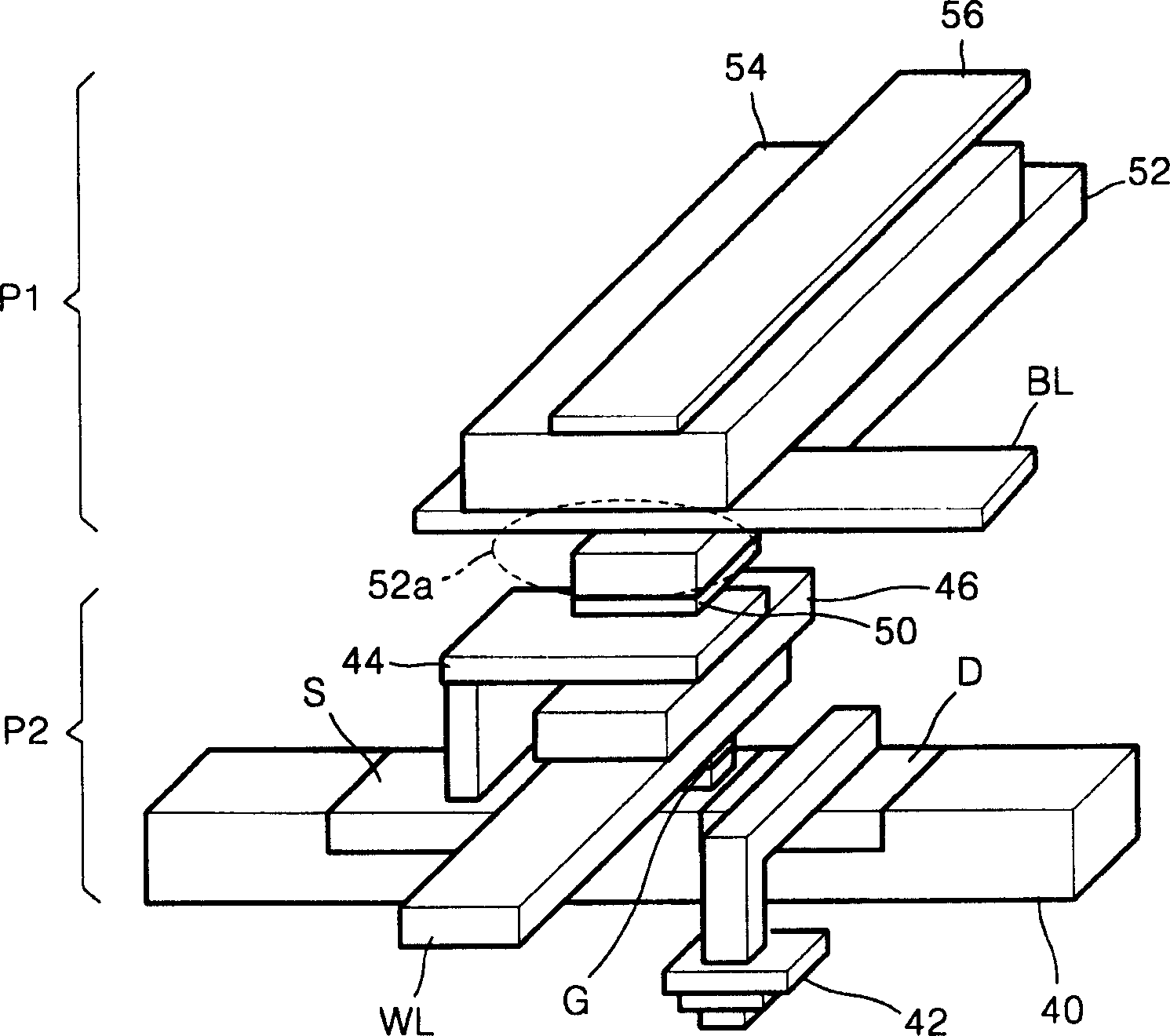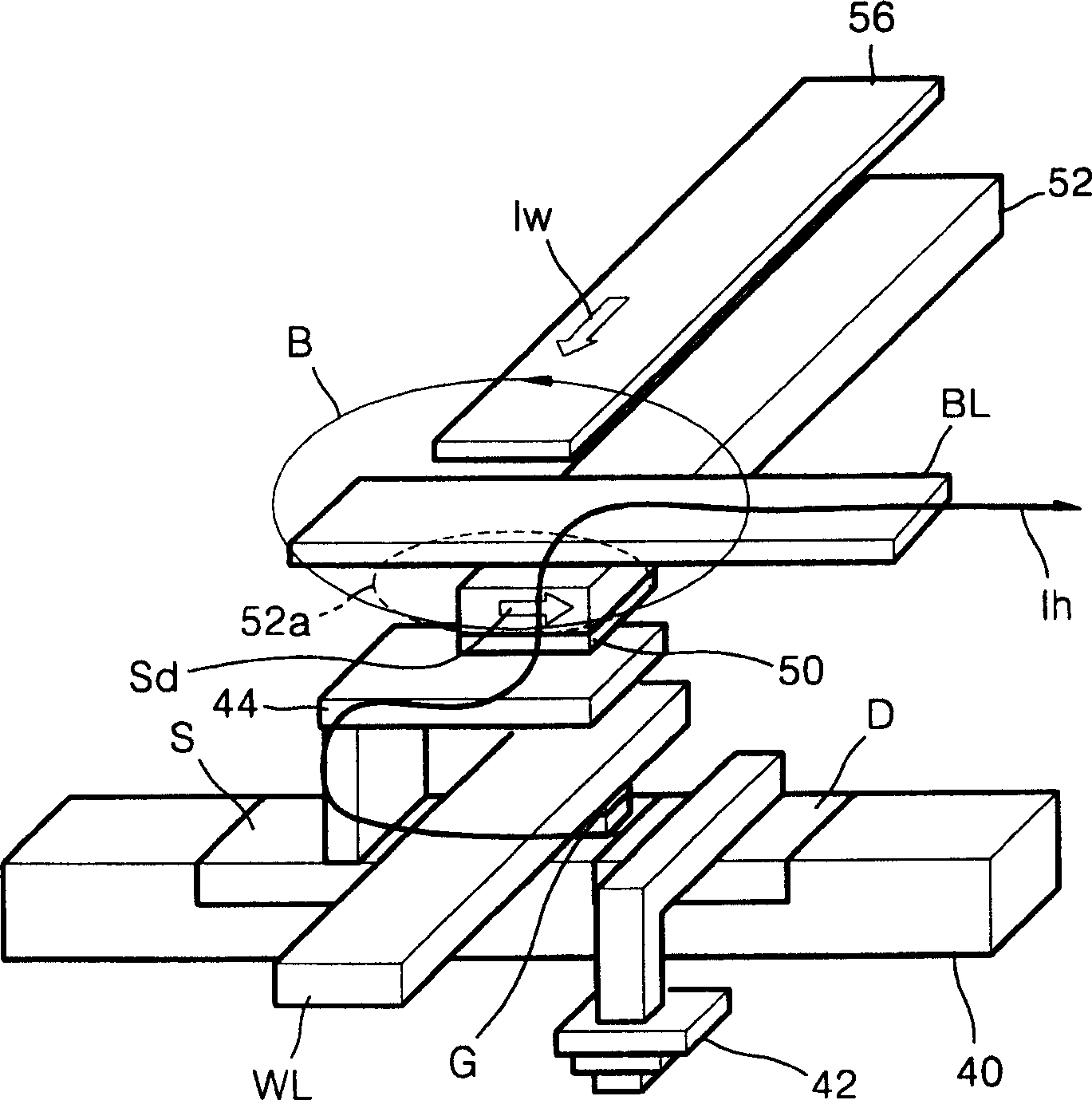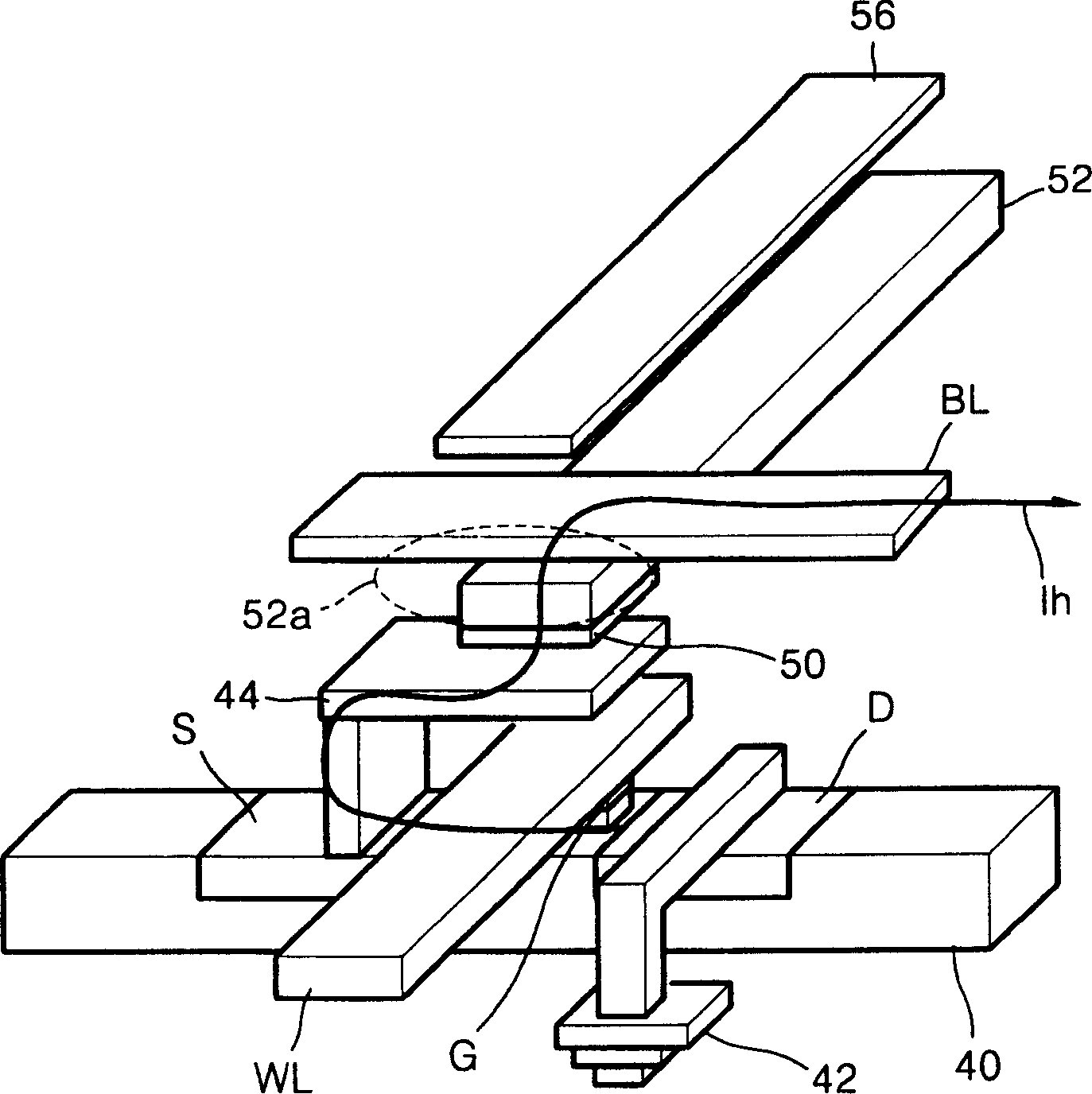Magnetic ram and method of writing and reading data using the magnetic ram
A technology for random access memory and data writing, applied in static memory, digital memory information, information storage, etc., can solve the problems of reduced thermal stability of the unit, prolonged operation time, increased coercivity, etc., to improve the coercivity. Strength, reduced manufacturing costs, and the effect of simple manufacturing
- Summary
- Abstract
- Description
- Claims
- Application Information
AI Technical Summary
Problems solved by technology
Method used
Image
Examples
Embodiment Construction
[0023] A magnetic RAM (MRAM) according to an embodiment of the present invention is a data-written storage layer formed of a magnetic amorphous rare earth transition metal (hereinafter referred to as amorphous RE-TM). The memory layer utilizes the spontaneous Hall effect that changes with its own magnetization state. That is, the Hall voltage of the storage layer differs depending on its own magnetization state. An MRAM according to an embodiment of the present invention utilizes this spontaneous Hall effect to write and read data.
[0024] This spontaneous Hall effect is caused by the spin-orbit interaction, that is, the interaction between free electrons and magnetic moments in magnetic materials, which is a unique property of magnetic materials. The spontaneous Hall effect in magnetic materials is significantly larger than the Hall effect caused by the Lorentz force (hereinafter referred to as the ordinary Hall effect). Specifically, the spontaneous Hall effect in amorpho...
PUM
 Login to View More
Login to View More Abstract
Description
Claims
Application Information
 Login to View More
Login to View More - R&D
- Intellectual Property
- Life Sciences
- Materials
- Tech Scout
- Unparalleled Data Quality
- Higher Quality Content
- 60% Fewer Hallucinations
Browse by: Latest US Patents, China's latest patents, Technical Efficacy Thesaurus, Application Domain, Technology Topic, Popular Technical Reports.
© 2025 PatSnap. All rights reserved.Legal|Privacy policy|Modern Slavery Act Transparency Statement|Sitemap|About US| Contact US: help@patsnap.com



